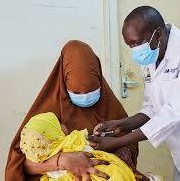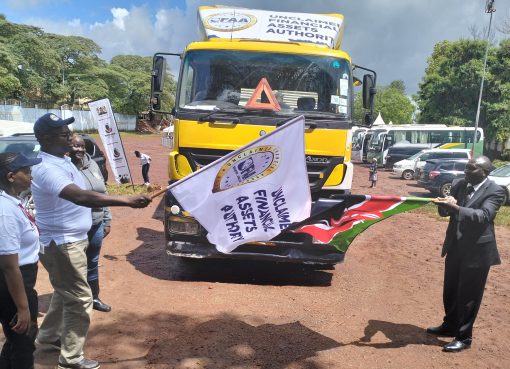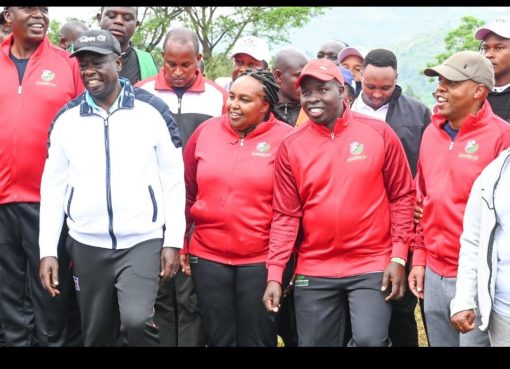The government through a consortium of experts will be carrying out an impact evaluation of the switch from 10 to 5 doses of the Measles Rubella (MR) vaccine in Kenya.
The study that will be carried out in three Counties, namely Kiambu, Vihiga and Homabay will not only assess the impact of switching the doses but will look at the vaccine coverage and wastage rates in three counties.
Speaking in Kiambu during a Stakeholder meeting before embarking on the baseline study, Dr. Edna Nyangechi from the Ministry of Health, National Programme on Immunization and Maseno University and who is the Principal Investigator (PI) of the project said the project will take eight 8 months
“The need to switch from the 10 to 5 dose vials of the measles rubella (MR) vaccines is informed by evidence from studies conducted in several other countries”, she said.
Countries like Zambia through their Expanded Programme on Immunization (EPI) study showed that wastage rate was 47 percent lower in facilities using 5-dose vials (16.2 percent) versus 10-dose vials (30.5 percent) while at the same time healthcare workers reported willing to open a a 5-dose vial than a 10-dose vial for one child at it was less when it comes to wastage.
According to Dr. Nyangechi, the study on the three counties in Kenya was informed by data given on vaccine coverage and therefore they took the lowest and highest in terms of Counties but also looked at the number of children in those counties.
“The MR vaccine coverage for Kiambu stands at 72.6 percent, Homabay 89.8 percent while Vihiga is the lowest at 59.5 percent”, she said
She explained that studies have shown health workers are reluctant to open a 10-dose vial to immunize fewer children in attendance during a routine immunization session.
“Besides running out of vaccine stock, health workers are concerned about contributing to high wastage rates and while this practice is aimed at reducing wastage, it also misses the opportunity to vaccinate children when fewer are in attendance which goes against World Health Organisation (WHO) policy”, she noted.
In Kenya, Dr, Nyangechi said that the National Vaccines and Immunization Program (NVIP) is mandated to make policy and manage the operations of the Essential Immunization program and Measles and rubella prevention are among the target diseases in this program.
NVIP currently uses 10 dose vials of the MR vaccine which is perceived to be more cost-effective but for the 10 to 5 dose transition to be effected in Kenya, the NVIP needs locally generated evidence on the coverage, impact on wastage, and health worker acceptability and tht is the gap that informed the study”, the PI said
The study basically is supposed to assess operational impacts, to assess vaccine vial wastage and to assess acceptability””, Dr. Nyangechi said,
The study will also seek to compare Health Care Workers (HCWs) acceptability and perceived benefits of 10-dose, asses the switch from 10-dose to 5-dose of MR vials on vaccine Supply Chain and operational factors in the three counties as well as estimate the total cost per vaccination of one child using 10-dose and 5-dose Measles Rubella (MR) vaccine vials
“We want further to evaluate the Knowledge, Attitudes and Practices of health care workers towards vaccine vial wastage at baseline and at end-line”, said Dr. Nyangechi
For the Study period, all healthcare facilities in the intervention sub-counties will receive and administer 5-dose vials of MR vaccine and the HCW will be trained on how to best administer and manage them.
Once the baseline survey is conducted to assess current operational costs, wastage, coverage and perceptions of health workers, an intervention phase will see Development of a hybrid curriculum, Training of healthcare workers, Implementation of the 5dose MR vaccines while post intervention will replicate the tools and procedures of the pre-phase to identify shifts that
Studies carried in other countries show that switching 10-dose MCV vials to 5-dose vials improved coverage, decreased wastage, and improved willingness to open a vial.
The findings of the study according to Dr. Nyangechi will be able to contribute to strategies for reducing missed opportunities for vaccination.
Measles disease remains a public health concern in Kenya. It contributes significantly to the burden of disease among under five children.
Since 2016, the MR vaccine has been offered as part of the routine childhood immunisation programme in Kenya, with one dose administered at nine months and the second dose at 18 months.
To ensure adequate protection in communities, it is important that at least 95 per cent of children receive the two recommended doses.
By Wangari Ndirangu





